Can I Make Bibimbap?
Those that know me well may know that I err on the side of caution when it comes to things I don’t know; they may also know that I’m not Korean.
I usually have a bit of background knowledge about the things I cook, at the very least I have usually eaten the dishes tens of times. I have only previously eaten Bibimbap once and it was incredibly tasty, but I really don’t know a lot about the dish. Under usual caution I’m not going to give a detailed history of the dish but I’ll give my expedition into my first time trying to make it and what I learnt along the way.
The first resource I found was a rather lengthy but informative youtube video from a lady called Maangchi. She was showing the difference between a “normal” Bibimbap and Dolsot Bibimbap, the latter is assembled in a stone pot and heated further before serving. It went into a lot of detail and used ingredients like Fernbrake which I can honestly say I’ve never heard of before. Top marks for the recipe but it’s not where I wanted to start.
Eventually I found a simpler recipe at this website. If you want to try and make the dish then I strongly encourage you to give it a go. I’m not going to repeat the recipe below but I will share some things I learnt along the way and the end result; we all know that following recipes isn’t always as simple as it sounds.
Spinach and Mung Bean Sprouts
There are to subrecipies in the main recipe but they are really easy and by themselves they actually make really tasty side dishes, they are the seasoned spinach and mung bean sprouts. Spinach is really easy to pick up in large amounts at a supermarket, mung bean sprouts I found quite cheaply at Tains Asian Supermarket.
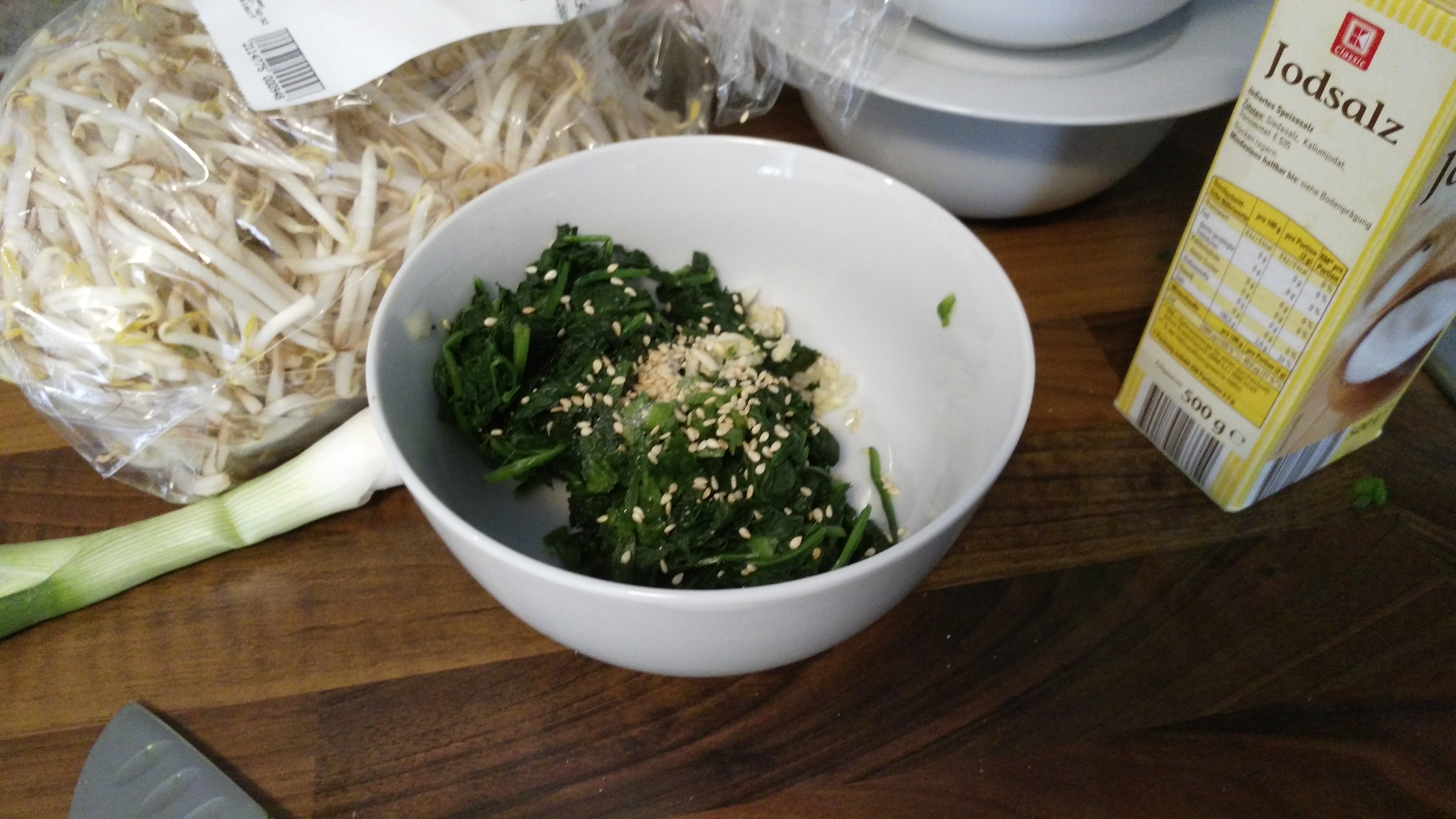
Seasoned spinach
They both cook so quickly; the spinach only needs 30 seconds of boiling. Afterwards you rinse them both under cold water to stop the cooking. This is great because they’re going to be cold anyway so you don’t have to hurry with the rest of the dish!
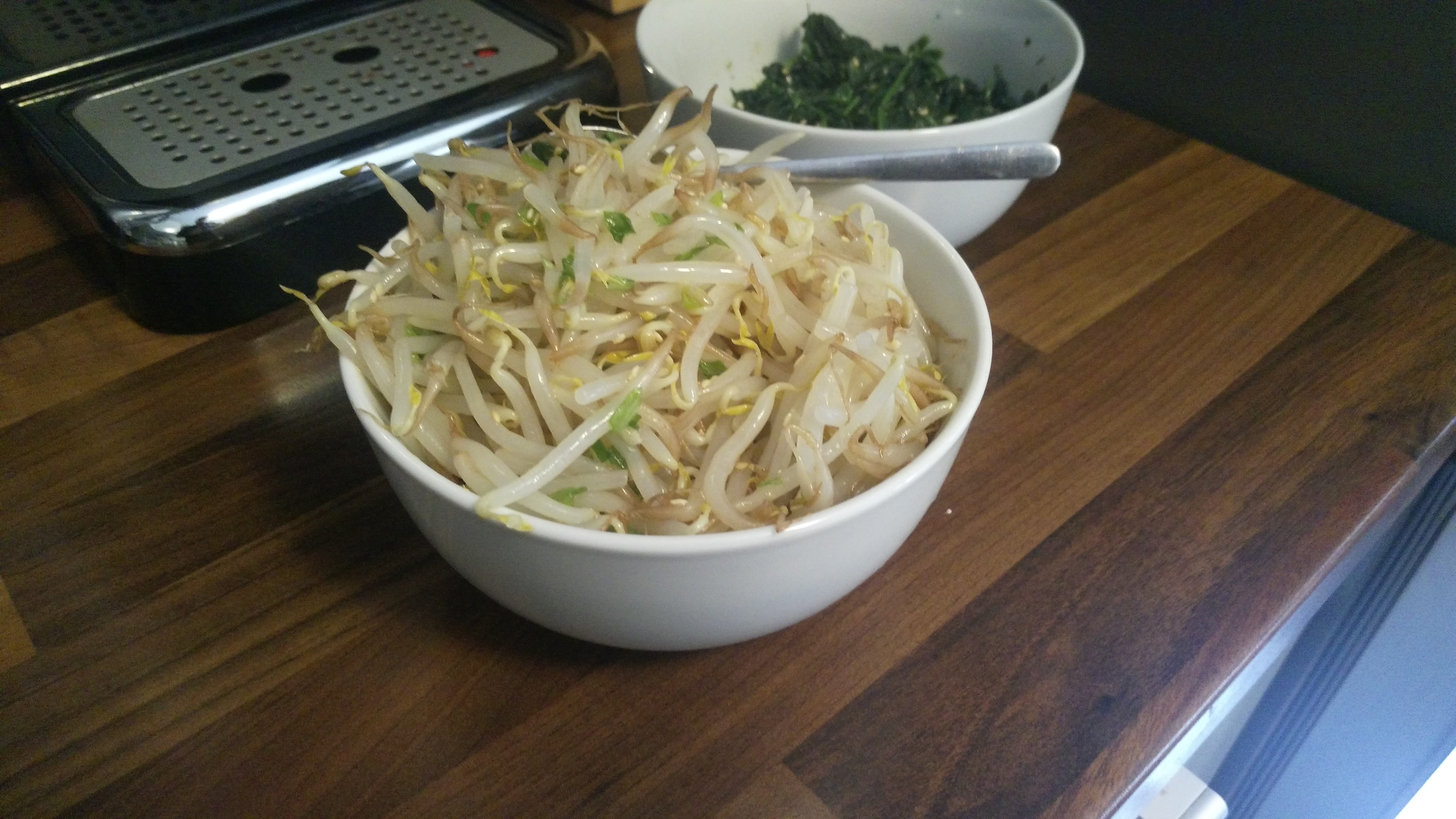
Seasoned mung bean sprouts
The seasoning is really easy too. Sesame seeds, garlic, sesame oil, and spring onion are all incredibly easy to find.
Mushrooms
This may not seem like the most exciting part of the dish but it is when you somehow pick up dried “black fungus”. I found it in the Asian supermarket and thought let’s give it a try, it’s a jelly-like mushroom and is very dark. I have found no evidence of its use in making Bibimbap but I can testify to it being tasty.

Also known as cloud ear fungus
Just remember to give it 60 minutes to rehydrate. According to the internet it’s not in any way dangerous but as per the packet instructions I boiled it for 10 minutes by itself, it came out great! This is all an aside, I’m sure shiitake mushrooms are equally great in the dish.
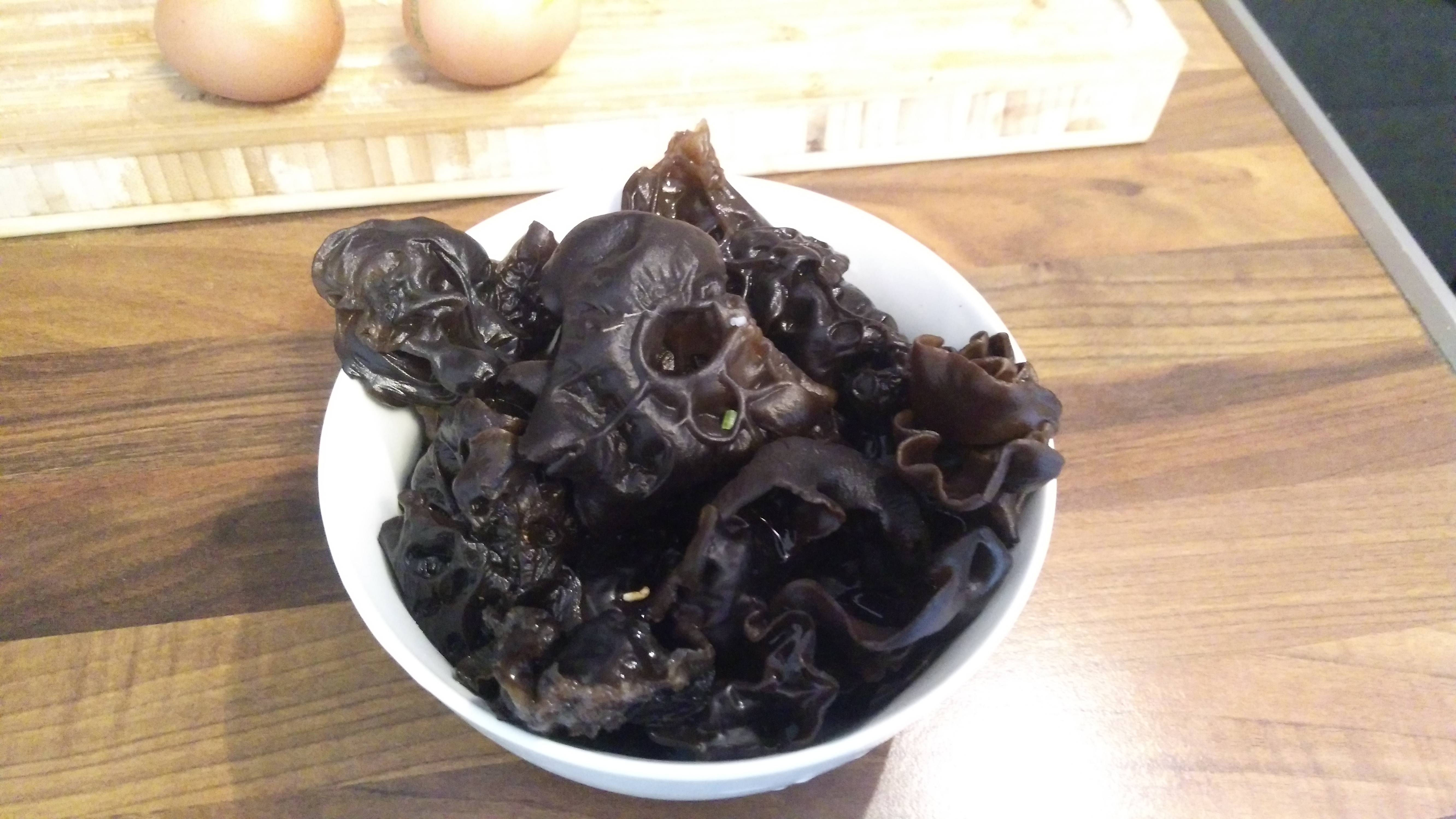
The rehydrated fungus
The “meat”
I used vegetarian mince for my portion. The main thing to remember is it’s a small component of the dish so you don’t need much more than 100g. If you end up buying 500g then make sure you’re making more than one serving or have a plan for the leftovers.
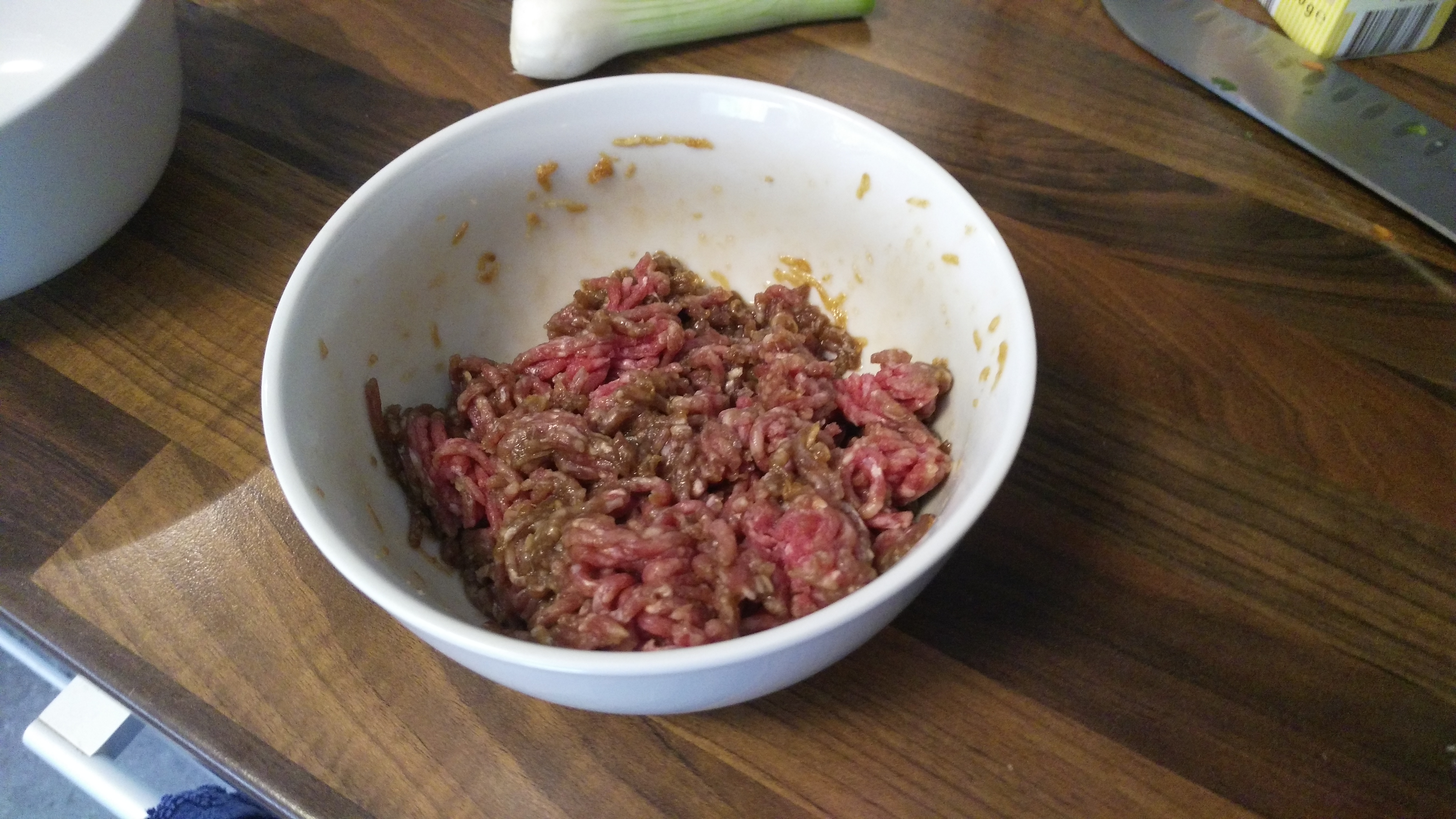
This is real beef mince, not particularly beautiful
Again the seasoning is really easy, soy sauce, sesame oil, garlic and sugar are once again easy to come by. You can even have the beef raw if you are certain of the quality and freshness of your beef. For the vegetarian mince I obviously cooked it, vegetarian beef tartare is a ridiculous concept.
The easy ingredients
As per the recipe I added some carrots and topped the assembled dish with a fried egg. There really is nothing fancy here but if you want carrots “julienned” (it’s a form of cutting) then there are many youtube videos on how to do this neatly. I just sliced the carrots very diagonally to get wide pieces and then cut them up into matchsticks.
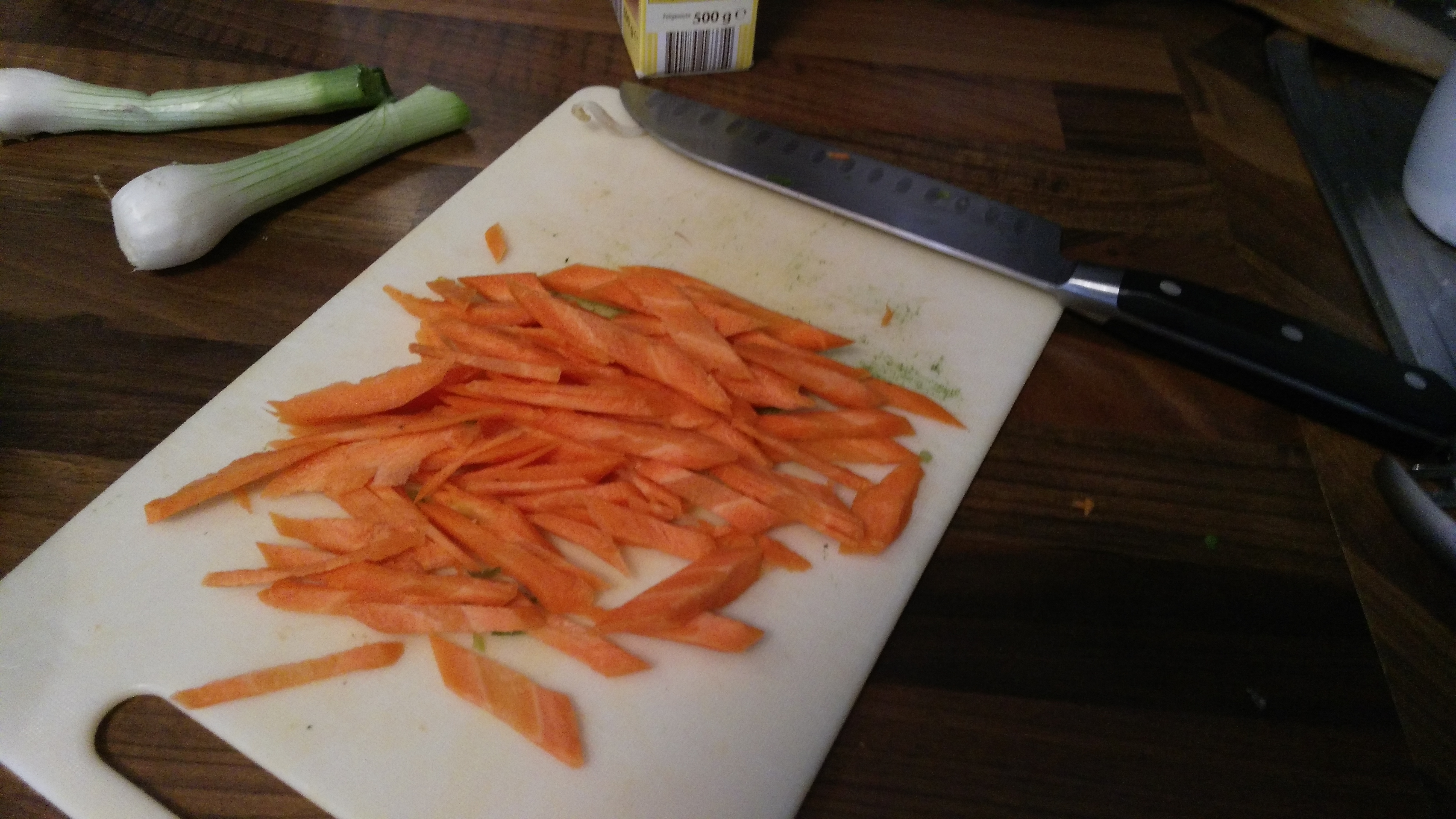
I can’t even julienne a carrot properly
Gochujang
Gochujang is a Korean red chilli paste. I can’t tell you much about the taste because I completely forgot to look for it. I read somewhere that it’s primary purpose is to add heat to the bibimbap and a good replacement is Sriracha chilli sauce, which by some miracle I had.
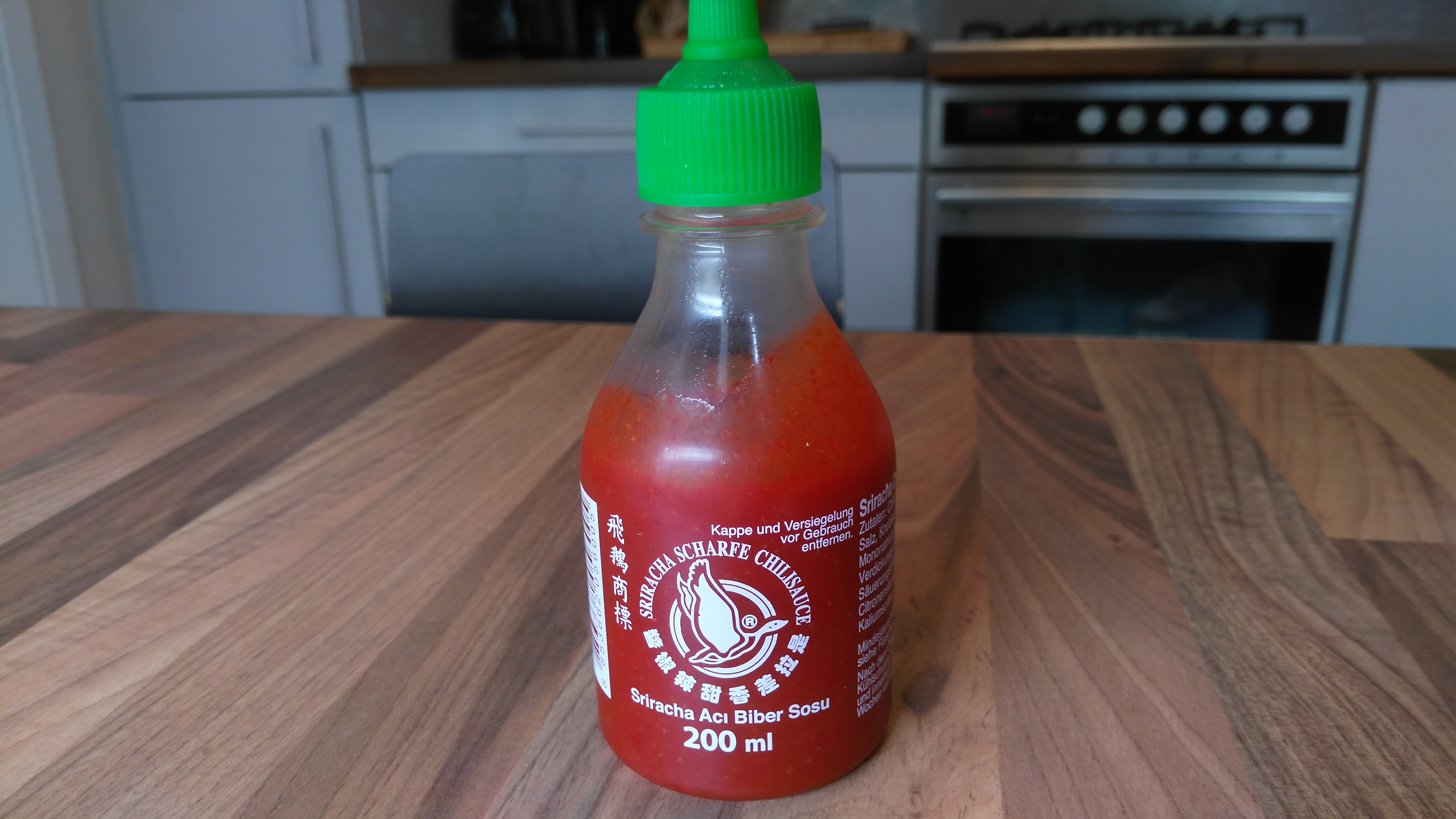
This is not Gochugang - Sriracha sauce to the rescue
Looking at the ingredients in Gochujang it looks quite tasty, so I doubt that it is only adding heat. I will definitely look for this when I next make Bibimbap, some may say I didn’t even make Bibimbap this time by forgetting it as an ingredient.
Rice
I get the impression that slightly sticky rice is better for this dish, that requires quite a glutinous rice. All I had available was jasmine rice but it is possible to make it sticky. Doing this is quite simple:
- Don’t wash the rice, the starch on the rice creates the stickiness
- Use just enough water, for 1 measure (a cup, a mug, a chalice, etc.) of rice you need two measures of water
- Put it in boiling water, close the lid, turn the heat down to minimum and leave it alone for 8 minutes. Do not take the lid off!
- All the water should be gone, turn off the heat and enjoy
The final result
Thanks for making it this far, or at the very least just scrolling directly to the end. All that remained was the assembly process. Line the bottom half of the bowl with rice, then in sections add the other ingredients, including the gochujang, and top with a fried egg. I decorated with some chopped spring onion and toasted seasame seeds.

Mid-assembly

Post-assembly
Then you just mix it all up and enjoy!

Post-mixing
And yes, I forgot to add the seaweed that I bought. Many lessons learned here.
